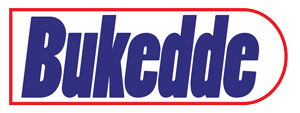Fix sticky issues in new curriculum
As a teacher, I have witnessed firsthand both the strengths and weaknesses of the new curriculum. Let me begin with the challenges, in the hope that they can be addressed promptly.
Fix sticky issues in new curriculum
By Admin .
Journalists @New Vision
__________________
OPINION
By Emmanuel Angoda
On Monday, October 13, 2025, UCE candidates will begin their final examinations. This will be the second cohort to sit for UCE under the New Lower Secondary Curriculum (NLSC), which was introduced in 2020. Unlike last year’s candidates, this year’s group has faced several significant challenges, especially during the registration process.
For the 2024 pioneers, UNEB required schools to submit Continuous Assessment (CA) scores only for S.4 Term One and Term Two.
However, for the 2025 UCE candidates, schools have had to submit CA scores from S.3 (all three terms) and S.4 (Terms One and Two). These CA scores account for 20% of the total marks, while the final UNEB examination contributes the remaining 80%.
These submissions of CA have not been easy, with many schools having incomplete scores, due to unavoidable circumstances such as transfers to other schools, inconsistent attendance due to fees, or even death. Transfer of students & CA from one school to another is now complicated, and requires a learner moving with their Learner ID (LID) and Learner Identification Number (LIN), together with a transfer letter from the former school.
As a teacher, I have witnessed firsthand both the strengths and weaknesses of the new curriculum. Let me begin with the challenges, in the hope that they can be addressed promptly.
The first issue is student registration. UNEB should design a more efficient and flexible registration system that starts in S.3 and accommodates real-life situations—such as students transferring from one school to another.
This year, UNEB registration, for both S.3 and S.4, has been very chaotic and disenfranchised many students. UNEB released over 20 versions of its AMIS e-registration software, with each version addressing an identified challenge.
The second issue concerns subject papers. Ironically, the core English Language and Mathematics now have only one examination paper each, while elective languages such as French and Leblango have two.
The same applies to subjects like History and Geography, which have been reduced to a single paper. While the framers of the new curriculum aimed to reduce the academic and cognitive load on learners, this approach has, in some cases, created a cognitive vacuum.
It would have been better to reduce the number of questions in each paper rather than remove entire papers.
It seems illogical that English and Mathematics—two of the most important subjects—have only one paper, yet other elective subjects and languages have two.
Thirdly, UNEB needs to establish a better system for receiving CA scores from schools. This year’s registration of S.3 and S.4 students has been chaotic and frustrating for both schools and parents. The major challenge has been the UNEB AMIS software, which struggled to locate some learners in the database or displayed incorrect learner details or subject choices.
Fourthly, the issue of repeating UCE exams remains unresolved. While it is commendable to link S.4 registration to prior S.3 registration and CA submission, there should be exceptions.
The current arrangement makes it extremely difficult for students to repeat UCE exams. Anyone wishing to repeat S.4 must start over from S.3, effectively spending six years in O-Level.
This is unfair, costly, and could contribute to school dropouts. What if a learner wishes to register as a private candidate? Or prefers to sit for only the final 80% without the CA component? Such flexibility should be considered.
Despite these challenges, the implementation of the NLSC is progressing well in many schools. Teachers and parents are gradually adapting to its demands. The curriculum’s focus on practical skills, creativity, innovation, and problem-solving—rather than rote memorisation—is commendable. It also promotes learner-centred teaching, critical thinking, inclusiveness, and ICT integration across all subjects.
In conclusion, the New Lower Secondary Curriculum is a progressive reform that aligns education with the needs of the modern world.
However, its success depends on promptly addressing the emerging challenges, particularly in registration, assessment, and examination structures.
By refining these systems and ensuring flexibility for learners, Uganda can achieve a more efficient, inclusive, and skills-oriented education system that truly prepares students for higher learning and meaningful participation in society.
The writer is the founder of Triskelion Education and Skills Initiative (TESI), and teacher at Lira Town College
angodaemmanuel@gmail.com
